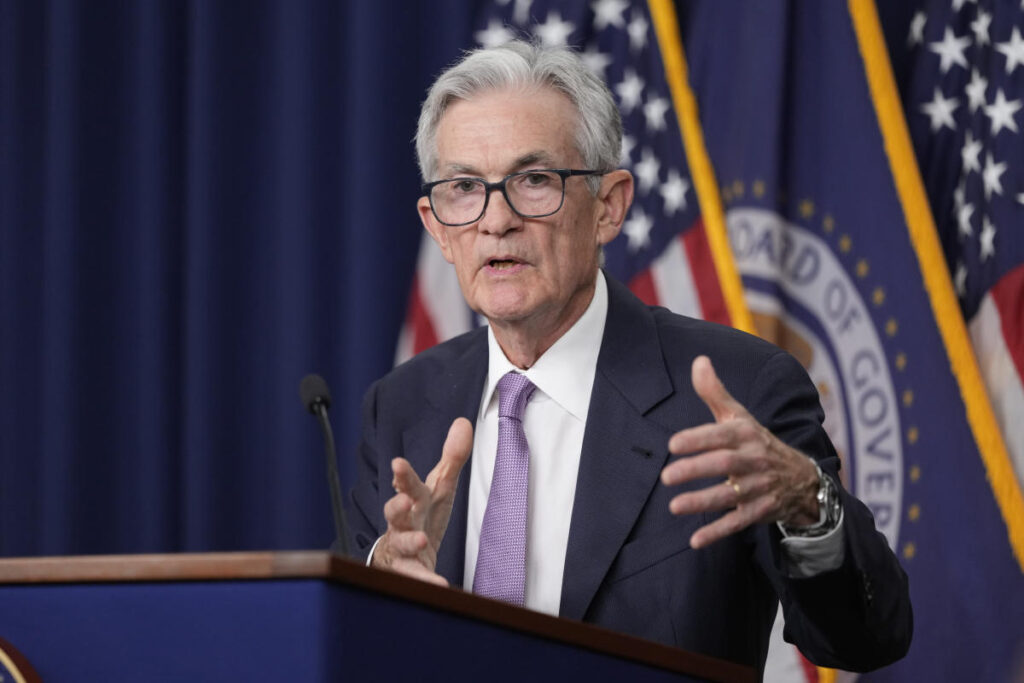The upcoming presidential election remains shrouded in uncertainty, yet one thing appears increasingly clear: the Federal Reserve is poised to reduce interest rates for the second time this year in response to cooling inflation. With inflation demonstrating a continued downward trend, the central bank’s decision to cut rates is relatively predictable, even if the presidential race remains unresolved by the time of the Fed’s conclusions on Thursday. Historically, the Fed has maintained an independent stance regarding rate decisions, but future actions may hinge on which political party commands the presidency and Congress. If Donald Trump were to regain office, his proposed policies—ranging from tariffs on imports to stringent immigration measures—pose a potential risk for inflationary pressures that could compel the Fed to reconsider its current trajectory of rate cuts.
Currently, the Fed plans to lower the benchmark interest rate by a quarter-point to approximately 4.6%, following a larger half-point cut in September. Economists anticipate a similar reduction in December and possibly more throughout the coming year. Typically, rate cuts are intended to stimulate the economy by encouraging borrowing and spending; however, this time the Fed’s actions are more about aligning with a new “lower-inflation environment.” Despite the economy expanding and a robust job market evidenced by an unemployment rate of 4.1%, high inflation rates necessitated the prior increase in interest rates, with the Fed raising rates a total of 11 times to combat inflation that peaked at a four-decade high of 9.1% in June 2022.
In recent months, inflation has seen significant declines, with the yearly rate dropping to 2.4% as of September, aligning closely with the Fed’s target of 2%. This reduction in inflation suggests that maintaining high borrowing rates may no longer be essential. Fed officials, including Chair Jerome Powell, have indicated a belief that current borrowing rates are overly restrictive and that a recalibration to more favorable levels is warranted. The central bank’s stance is that the restrictive measures were a necessity during periods of high inflation, and now that inflation is under control, there is room for lower rates to foster economic activity in interest-sensitive sectors such as housing and automotive sales.
Going forward, the central bank faces a complex consideration regarding the pace and extent of rate cuts. Fed officials express a preference for gradual reductions, but there’s a consensus that further cuts are supported among decision-makers. Christopher Waller, a key figure on the Fed’s Board, emphasized the challenge of determining how quickly the Fed can lower the benchmark rate without affecting economic stability. Online economists also note that the neutral interest rate—the rate that neither stimulates nor restrains economic growth—remains a key focus; estimates suggest it could be between 2.9% and 3.5%.
Contentions arise as some economists argue that the current economic strengths may negate the need for further significant reductions in borrowing rates. With sustained low unemployment rates and a projected loyalty growth of 3%, some analysts question the rationale behind the Fed’s prospective cuts. The dynamic turns more intricate as Chair Powell’s upcoming press conference post-Election Day will likely draw questions concerning political influences on monetary policy. It remains clear that Powell and his counterparts will assert that the Fed’s decisions remain insulated from political pressure, no matter the election outcome.
However, former President Trump’s proposals for sweeping new tariffs—and the inflationary pressures they could exert—cast a cloud over future Fed actions. Economists worry that extensive tariffs could force the Fed’s hand both in preventing inflation from rising and in determining the necessary rate adjustments in response to shifts in economic policy. The suggested tariffs could introduce an estimated 2% increase in inflation next year, according to research by the Peterson Institute for International Economics. If Trump were to be re-elected, the Fed might be compelled to alter its approach to rate cuts, as analysts speculate that potential inflationary impacts of his policies could lead to a recalibration of their forecasts for interest rate reductions in the years to come.

